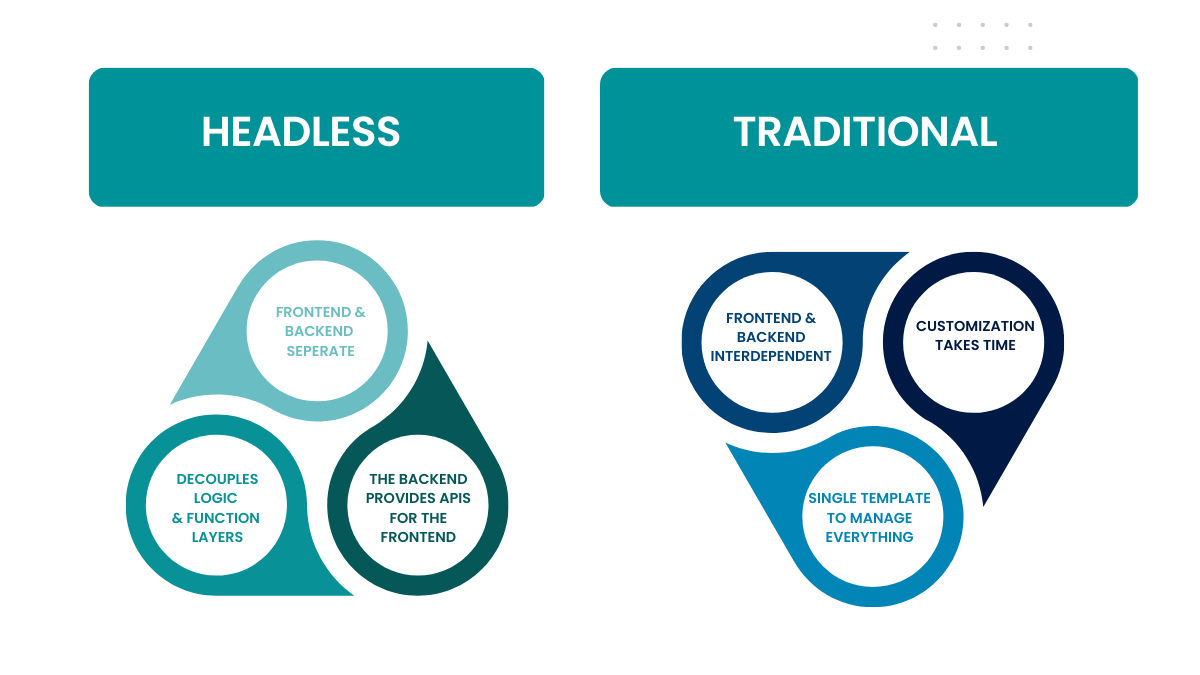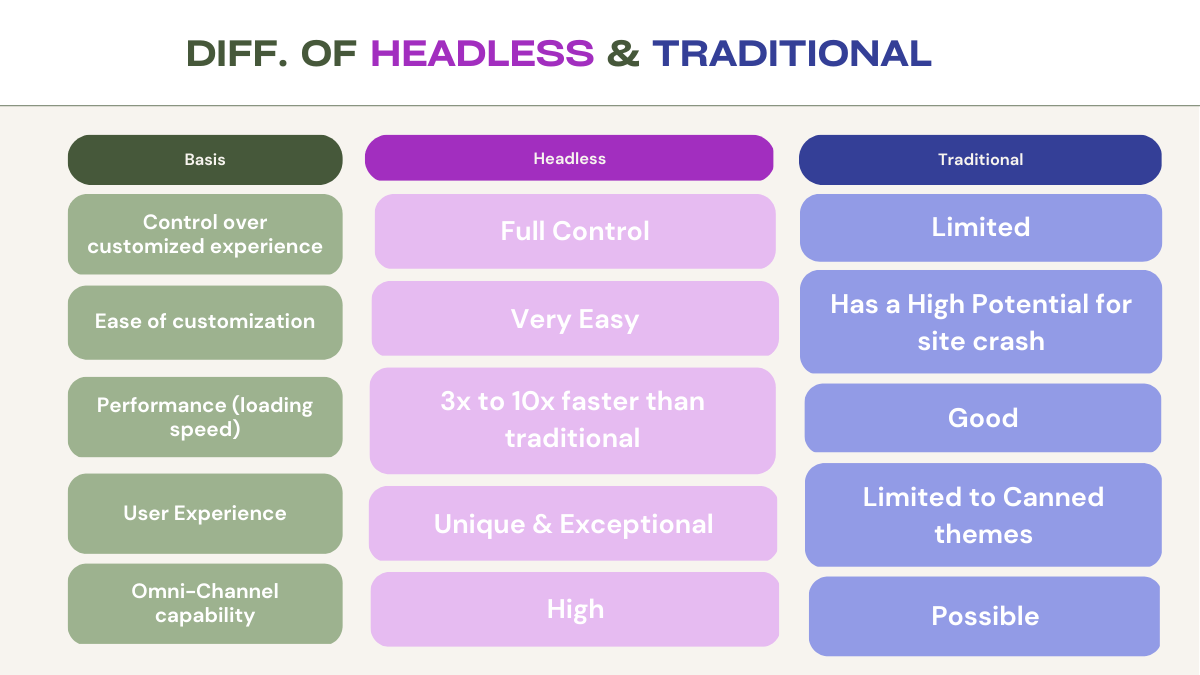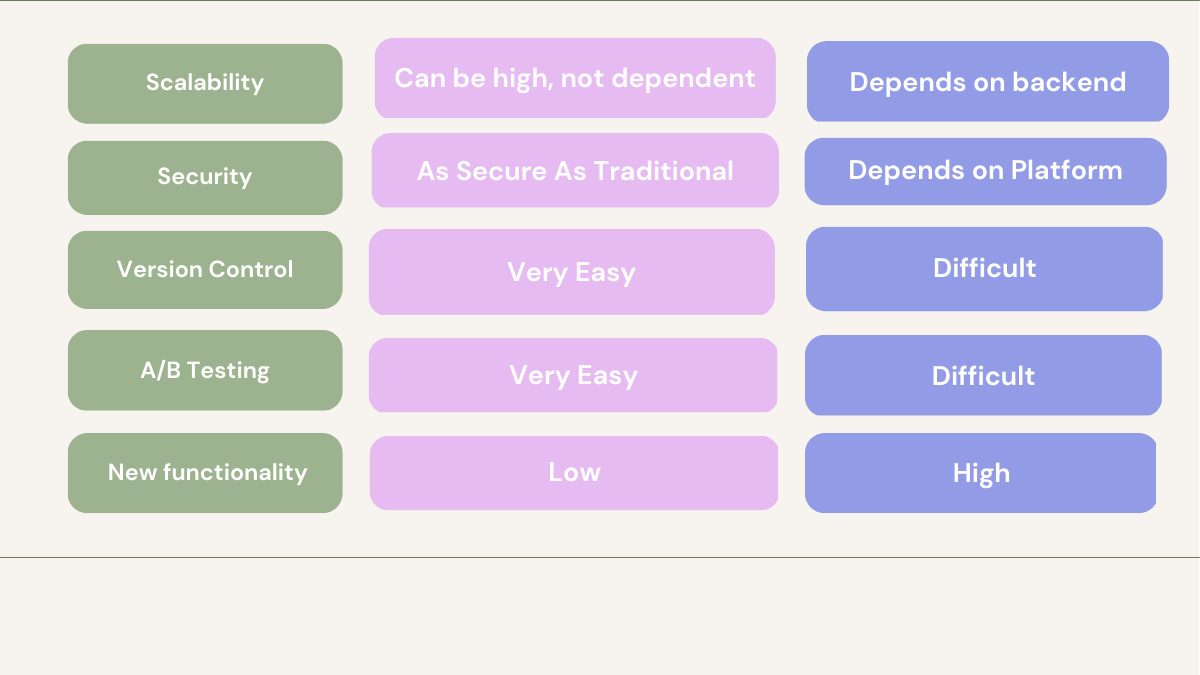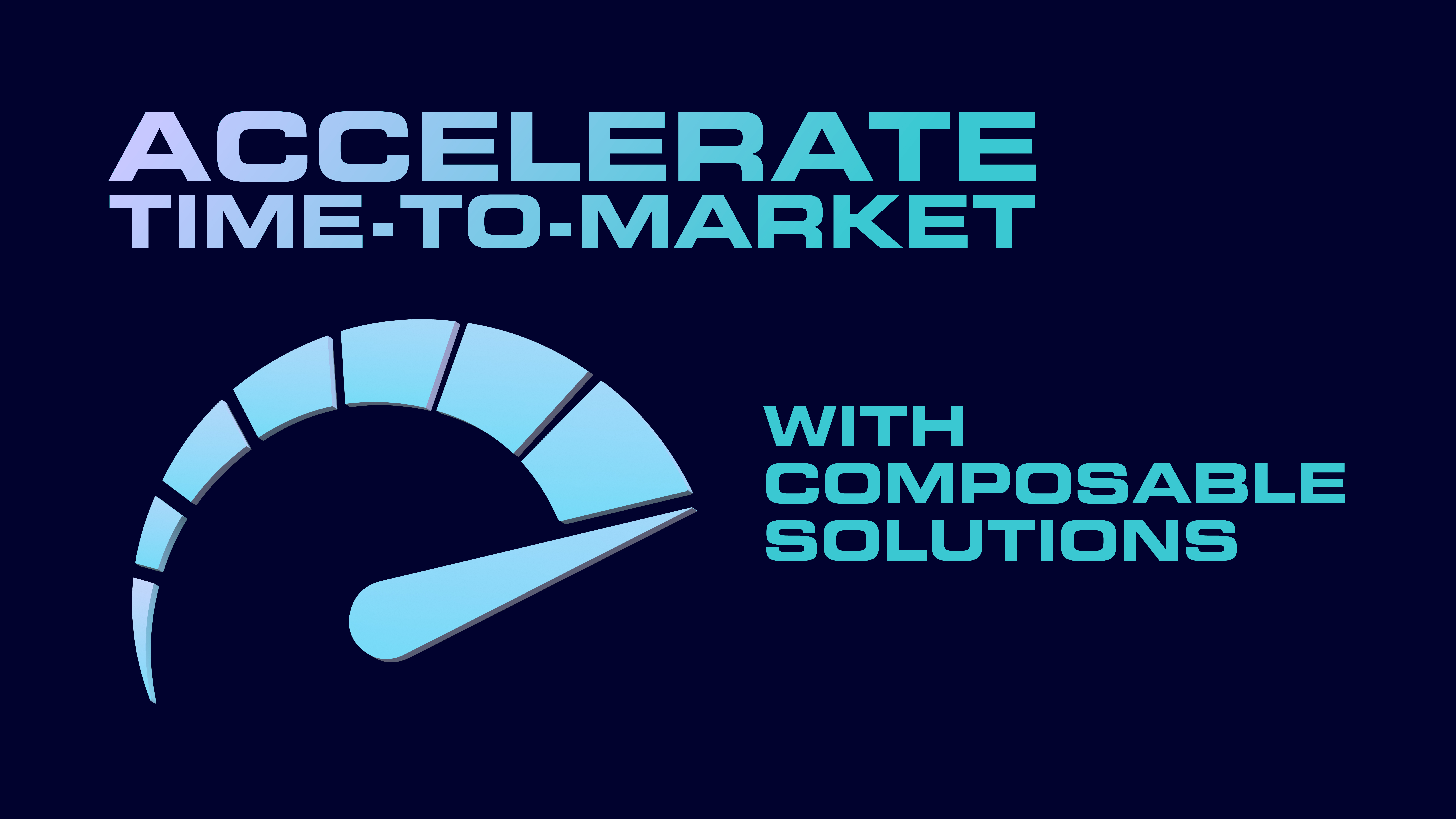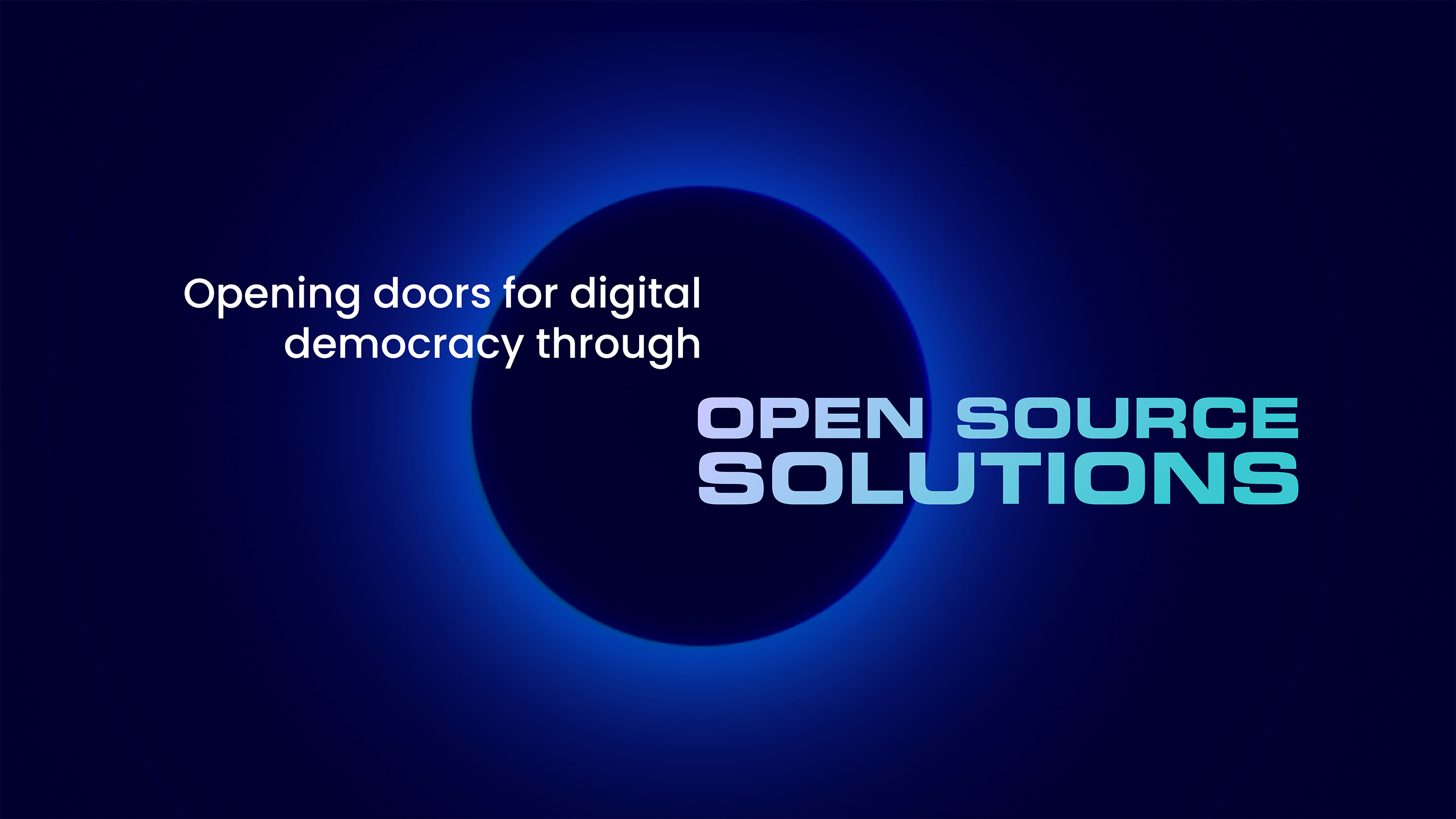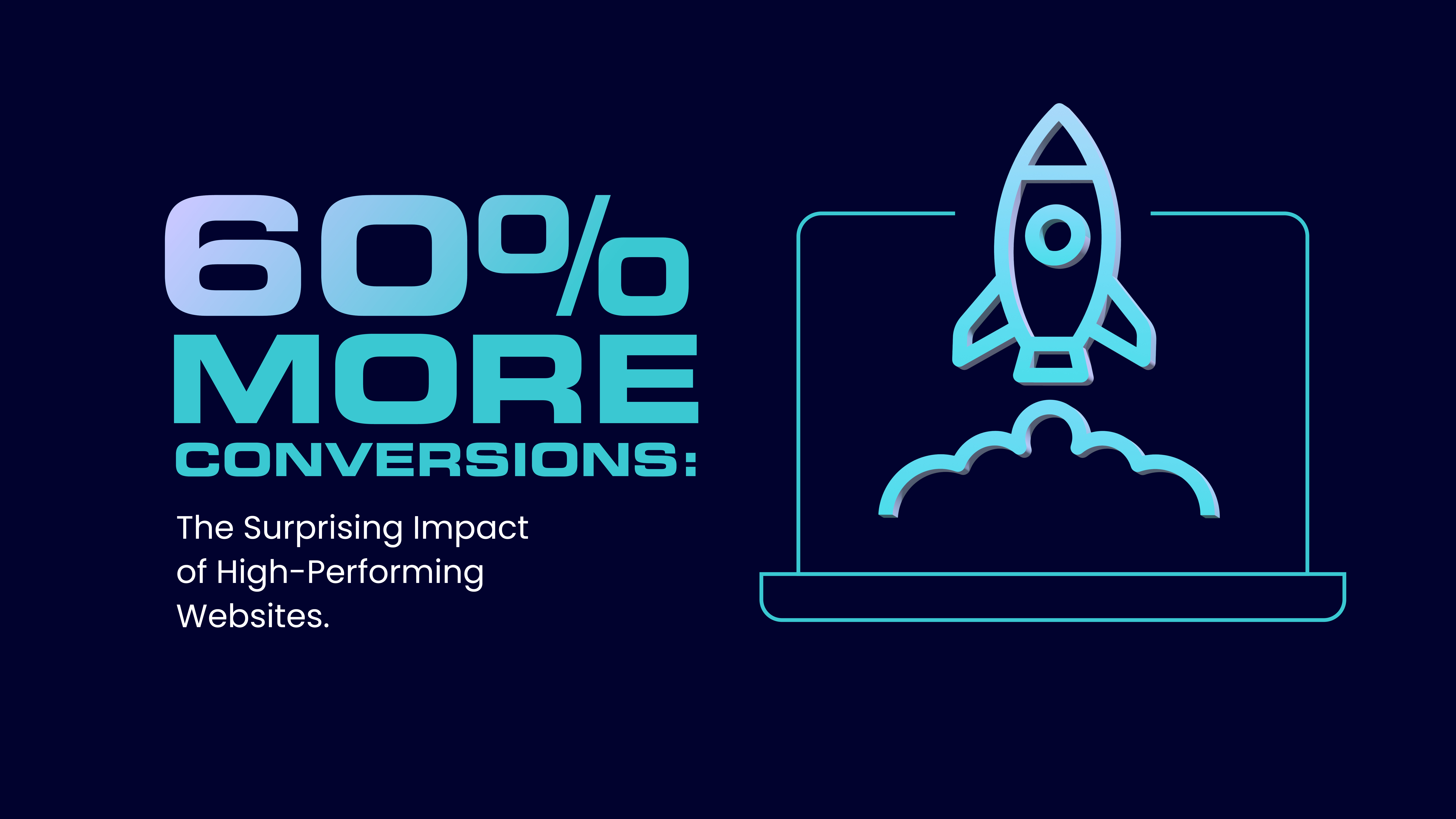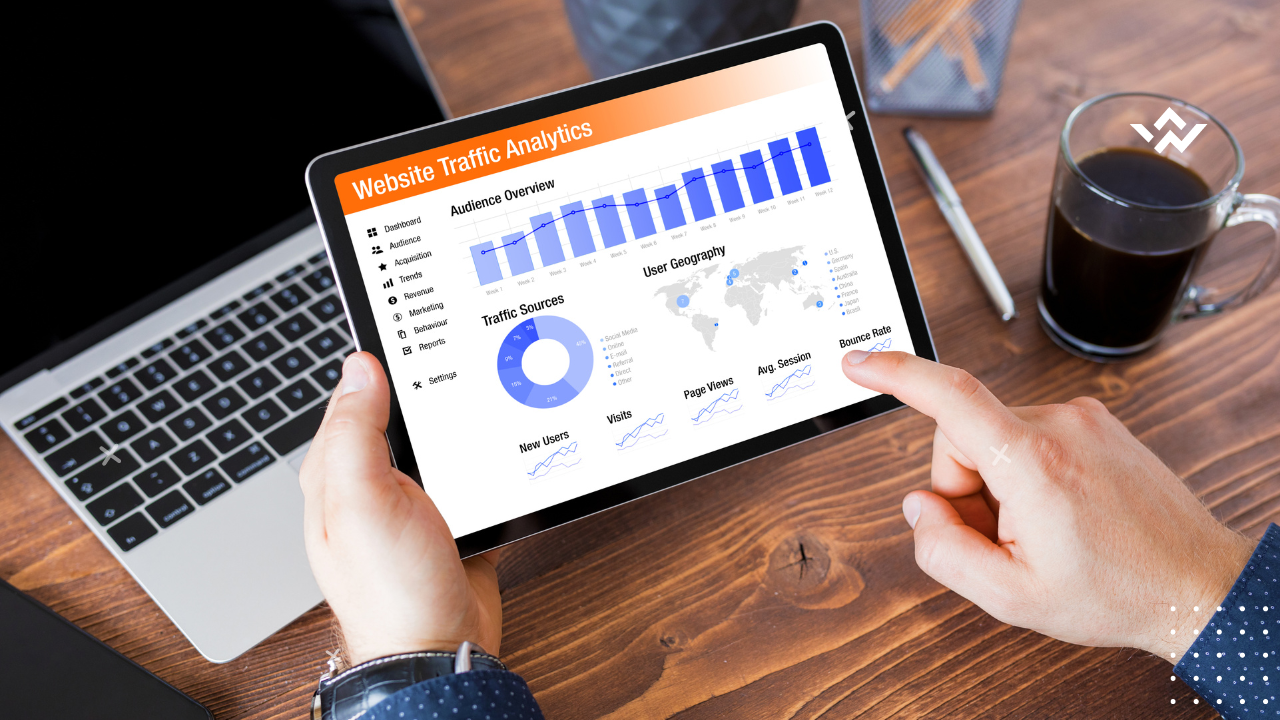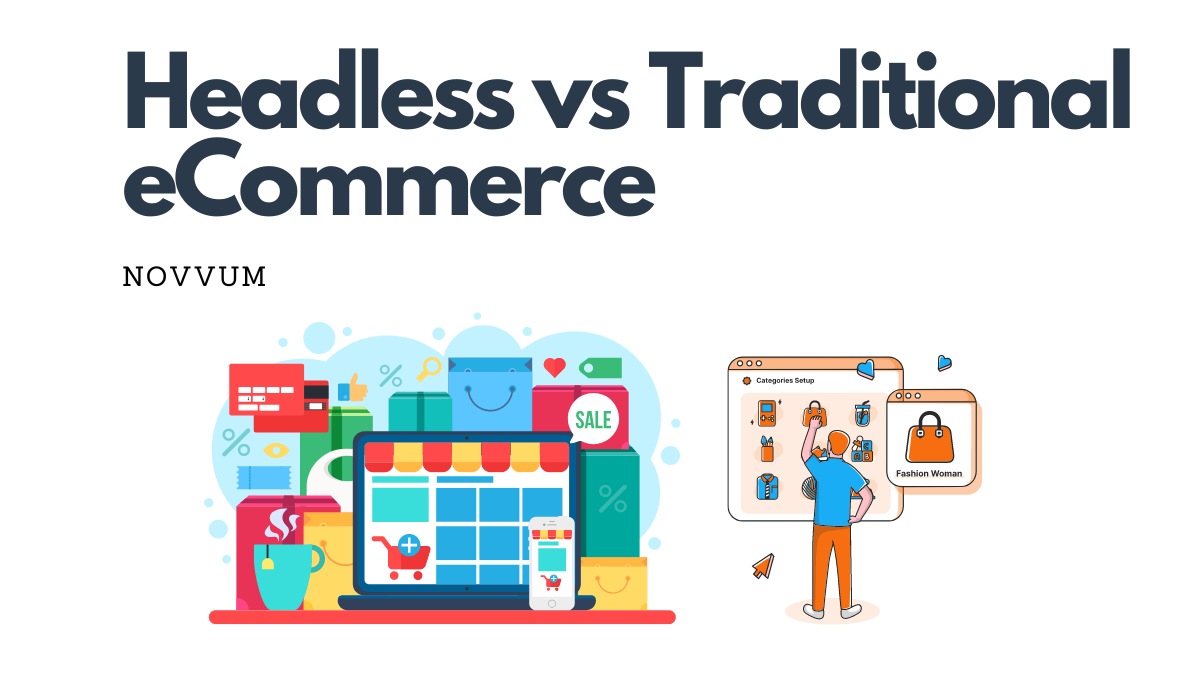
Evaluating the Trade-Offs: Headless eCommerce vs Traditional eCommerce
When it comes to building and managing an online store, businesses have several options to choose from. Two of the most popular types of eCommerce are headless and traditional. While both types of platforms offer a range of features and tools for building and managing an online store, they differ in terms of flexibility, customization, and ease of use.
In this blog, we'll explore the trade-offs of headless eCommerce vs traditional eCommerce platforms, and help you understand which type of platform is best for your business. By carefully evaluating the pros and cons of each option, you can make an informed decision about which one is best suited to meet your needs and goals.
Understanding the Differences Between Headless and Traditional E-commerce
Headless eCommerce is a type of online store architecture where the front-end website is separated from the back-end system that manages the catalog, orders, and customer data. In other words, it decouples the logic and function layers. The back end provides Application Programming Interfaces (APIs) for the front-end website to access product information, process orders, and handle other eCommerce tasks. This allows a seamless user experience.
Traditional eCommerce, on the other hand, integrates the front-end website and back-end system, meaning the front-end is usually built using a specific technology supported by the back-end. Updating or customizing the front end often requires changes to the back end as well. Traditional models often come as a single package, making it easier for merchants to set up and manage their online stores.
A summary of the differences between headless e-commerce and traditional e-commerce is shown below:
Benefits of Headless E-commerce Architecture
Nowadays, consumers can enjoy a better user experience. This is due to the development of eCommerce platforms that prioritize the needs and expectations while shopping online.
Headless eCommerce has several advantages that make it a popular choice for many businesses.
Offer greater flexibility and customization options.
- The front-end website can be built using any technology or framework, making it easy to customize and update independently.
- Allows businesses to tailor their online store to meet the specific needs of their customers.
Provides scalability, allowing businesses to easily handle traffic spikes.
- The back-end system can handle a large volume of traffic and orders without being slowed down by the front-end website.
- Makes it easier for businesses to scale their online stores as they grow.
Highly customizable UX, allowing businesses to tailor user experience.
- By building the front-end website independently, businesses can create a unique and personalized online store that ensures a smooth customer experience.
- It can greatly enhance loyalty and engagement and conversion rates.
Easy A/B testing for different variations
- A/B testing allows you to compare the performance of different versions of your website or marketing campaigns and determine which version is more effective at converting visitors into customers.
- A headless platform makes it easy to test different design elements and user flows to determine which ones are most appealing and effective for your target audience.
- Creates a more seamless and enjoyable shopping experience for your customers, leading to increased satisfaction and ROI.
Improved Website Performance and Simplified User Experience
- By separating the front end and back end of your website, you can optimize the performance of each component individually. This can result in faster website load times and a smoother browsing experience for your customers.
- You can add new features or functionality to your website without affecting the performance of the front end. This can help improve overall website performance and user experience.
Website stability with Testing and debugging changes in a non-live environment
- By using a headless architecture, you can implement changes to your eCommerce website in a staged approach. This means that you can test and debug changes in a non-live environment before pushing them live, which helps ensure that your website remains stable.
- With a headless architecture, you can perform maintenance and updates to your website offline, without disrupting the user experience. This helps to ensure that your website remains stable and available to customers at all times.
Omnichannel provides integrated customer experience across multiple channels.
- With headless eCommerce, you can create a seamless and consistent customer experience across all channels, including web, mobile, and in-store.
- Headless eCommerce allows you to collect and analyze customer data from all channels in real time, which can help you create more targeted and personalized marketing campaigns.
Cons of headless eCommerce
The potential downside of the headless eCommerce approach are:
Higher Costs from research, development, design, prototyping, testing, and deployment.
- Integration of the front-end website and back-end system may incur additional development costs.
- May require outside developers to build and maintain the front-end website.
Involves high expertise in decoupling the front-end and back-end of a website.
- Setting up and maintaining a headless eCommerce system requires a high level of technical knowledge.
- May require additional training or support for in-house teams.
Headless eCommerce is particularly suitable for mid to enterprise-level stores that are looking to scale and expand their online presence. Streamlining operations and improving efficiency, which can be especially important for mid to enterprise-level stores that have a large number of products and customers.
Benefits of traditional eCommerce
The solution is easy to set up, allowing you to quickly get started.
- Integrates the front-end website and back-end system, providing businesses with everything they need to get started.
- Includes a website builder, catalog management tools, payment, and shipping integrations.
Minimal effort, making it more effective for the user.
- Traditional eCommerce platforms are typically designed to be user-friendly, with intuitive interfaces and step-by-step guides.
- Makes it easy for businesses to get up and running quickly.
Not much technical expertise is required.
- Front-end website and back-end system are already integrated, so no additional development work is needed.
- Can save businesses time and money, especially for those with limited technical expertise.
Cons of traditional eCommerce
Drawbacks of Traditional eCommerce:
Does not offer the same level of flexibility as headless eCommerce.
- The front-end website and back-end system are integrated, so businesses may have less control over the appearance and functionality of their online store.
- Can make it harder to customize the user experience and make changes to the front-end website as the business grows.
The level of customization is minimal and provides less control.
- The front-end website is built using a specific technology or framework supported by the back-end system.
- May have less control over the design and functionality of the online store, making it more difficult to create a unique and personalized shopping experience for customers.
High dependency on third-party platforms, reducing efficiency.
- Limited customization options for website design and functionality.
- Dependence on third-party platforms for payment processing and shipping.
Difficulty in tracking and personalizing customer data and behavior.
- Difficulty in tracking and analyzing customer data and behavior.
- Limited ability to offer personalized shopping experiences for customers.
Traditional eCommerce will struggle to keep up with integrations.
- Difficulty in adopting new software integrations
- Workarounds may be difficult and expensive
Struggles to optimize websites for different devices, leading to inadequate experiences.
- The site may not display correctly on different devices
- Customers may experience issues such as distorted page displays or missing buttons
Headless eCommerce vs traditional eCommerce: which is right for your business?
Overall, the main trade-offs of headless eCommerce are the development costs and technical expertise required to set up and maintain the platform. While headless eCommerce can provide several benefits, such as flexibility, scalability, and a customizable user experience, these benefits come at a cost. Businesses need to invest in the development of their headless eCommerce to ensure that they have the necessary technical expertise to manage it effectively.
On the other hand, traditional eCommerce platforms offer a turnkey solution with ease of use but may come with limitations in terms of flexibility and customization. Businesses should carefully consider these trade-offs when deciding whether to finalize traditional eCommerce or headless eCommerce as the right fit for their needs.
Both approaches have their benefits and drawbacks, and it's important to weigh them carefully before making a decision. So, with the below questions, find out which eCommerce is right for your business.
- How important is adopting the latest solutions or innovating the customer experience?
- What's your timeline for launching the site?
- Do you have a developer in your team?
- What's your budget?
Take the time to evaluate your business needs. By carefully considering these trade-offs, you can make an informed decision that will set your business up for success.
